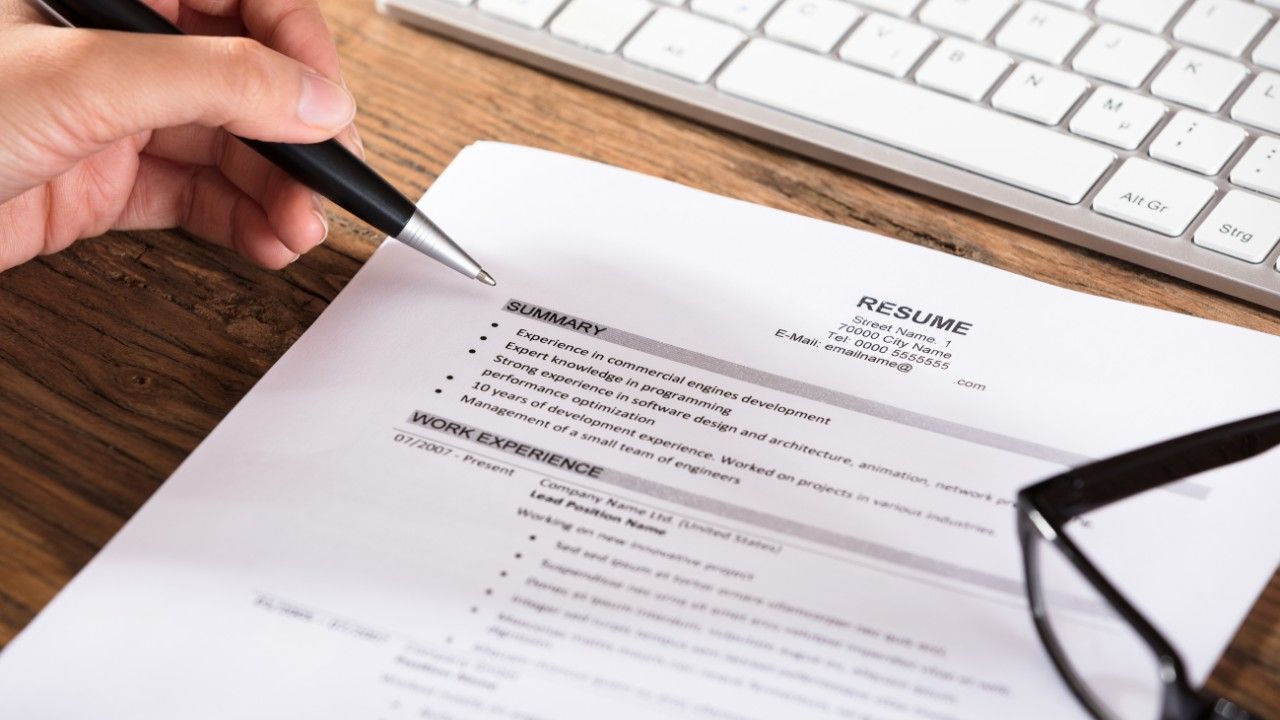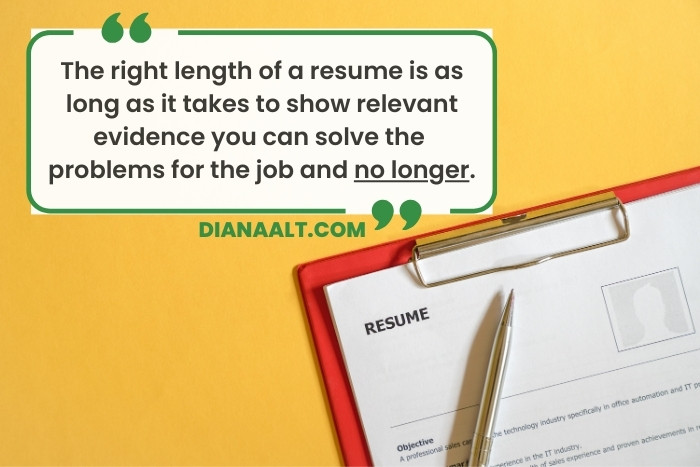Crafting a Standout Resume: 8 Best Resume Formatting Tips
Oct 22, 2023
First impressions matter! Following the best resume formatting guidelines can be the edge you need to get past the skimming stage.
Before a recruiter reads a single line on your resume, they’ll likely make a judgment call. It’s up to you to ensure this judgment swings in your favor.
Formatting is incredibly important when crafting a standout resume, promoting professionalism, ease of reading, and ensuring it doesn’t get scrapped before they get to your qualifications.
If you’re entering the workforce, surviving a layoff, or changing industries, you’re likely polishing off your resume and wondering if it fits current standards.
In this post, I’m sharing my best resume formatting tips that will impress any step in the hiring process.
SPOILER ALERT: some of these are NOT what you think.
8 Best Resume Formatting Tips
Use these tips in your job search strategy and allow your qualifications to shine, getting rid of any fluff or distracting content.
1. Whitespace is king
One of the biggest mistakes that professionals make when formatting their resumes is failing to leave room for the words on the page to breathe, like fine wine.
Lots of people struggle with this, but it’s particularly common for long-tenured professionals that hand in resumes that look more like a biography than a brochure. The result? Walls of tiny text that are painful to the eyes
Here’s the thing, folks. If your resume is umpteen pages long with narrow margins and tiny font, no one is going to read it!
These days, we do most of our online work on a mobile device or tablet. And the exact same thing is happening with resumes. Recruiters will often complete first screenings on the go, using a small mobile device that makes reading tricky.
Make it easy for them! Keep your resume plain and easy to read, using ample whitespace to your benefit.
You can add more whitespace by using multiple paragraph breaks, condensing your writing, and using bullet points for easy scanning.
Use this blog post for example, if we packed it all together it would look seriously overwhelming. The same concept applies to resume formatting.

2. Two pages are OK
There’s an old legend out there - mostly propagated by ill-informed workforce development centers - that you should keep your resume to a single page. And while this can be great, especially early in your career, I actually think that having a two-page resume is also A-OK.
Despite this widespread rule, resist the urge to confine yourself and your achievements to a single page. Instead, curate your resume well, and craft a 1-2 page result.
It’s better to have a two-page resume where the text can breathe on the page with ample whitespace rather than cramming everything into a one-page block.
So what’s the real limit? It depends. My rule is that the right length of a resume is as long as it takes to show relevant evidence you can solve the problems for the job and no longer.
1-2 pages does the job for most people in private sector corporate roles. For some fields like medicine, higher education, and government, it can be longer.
3. Submit using a PDF
One of my most standard (and important!) resume tips is to create and submit your resume in the form of a PDF.
This, of course, does not apply to systems or postings that specifically ask for a different format. In that case, people, you need to RTFI - read the freaking instructions!
But when given the choice, a PDF file has the most consistent formatting across operating systems. It also eliminates weird printing issues if a recruiter chooses to print your resume.
4. Resist the urge to get fancy
I understand – it’s easy to get carried away with fancy formatting, but it’s actually the opposite of the best resume formatting suggestions..
When you’re trying to stand out from the competition, it’s tempting to try some artful touches, colored font, and some arguably odd design choices. Heck, it’s even possible to purchase fancy resume formats from Etsy or career coaches, or get a free template on Canva.
But I’m here to ask that you please resist the temptation to “jazz up” your resume.
If you choose to use a pre-made template, make sure it’s not too overly designed. The more you have going on, the harder it is for recruiters to read your resume. You’ll want to avoid icons, multiple columns, and perhaps the worst thing of all - random measurement bars that supposedly show your proficiency with skills but actually mean nothing.
Choose a clean format with a standard font size (between 10 and 11) and an easy-to-read font. Times New Roman is often touted as the gold standard, though Arial also works.
5. Choose high contrast
There’s a reason why black print on white paper is standard practice. This high-contrast combination lets recruiters easily read your resume with no squinting required.
This is especially important for accessibility reasons, helping those with visual impairments to read your resume.
It’s also important for people without vision impairments who look at resumes all.damn.day.long.
Avoid gray font, even if it’s your usual preference. High contrast is the only option.
6. Keep it consistent
Once you’ve crafted your star resume, check for consistency!
Your resume should have a consistent font, spacing, bullet style, and paragraph breaks. You want your resume to look as polished as possible, and consistency is a necessary starting point.
Oh, and while you're checking for consistency, be sure to check your verb tenses. Using present tense verbs for jobs you held years ago is sloppy. Reserve present tense for your current position, please.
Beyond these practical elements, check that your tone is also consistent throughout. Yes, even a resume has a voice.

7. Review review review!
All your work on perfect formatting goes right out the window when a resume isn’t properly reviewed. A resume riddled with spelling errors is definitely one of the biggest interview red flags (if you even make it to that point!). Especially if you claim to be detail-oriented.
Once you think you’re done crafting your resume, take the time to both review and revise. Think about:
Spelling and grammar: These errors make you seem less motivated and interested in the job you’re applying for. Not confident you remember all the rules? Grammarly is your friend. Use it.
Jargon: Language can be isolating. And if a recruiter has no idea what the heck you are talking about, their attention span will likely be short. A simple trick to ensure you aren’t overdoing the jargon? Ask a friend who is outside the industry to read your resume and tell you what they find confusing.
Conciseness: Can you say the same thing shorter and simpler? Do it.
Consistency: Is your formatting consistent? How about tone? How clear is your career path displayed in your resume?
Lastly, when you’re revising, read your resume out loud and ask yourself, “Does this sound like an actual person?” Recruiters want to hire people, not robots. While professionalism is important, a little bit of personality should be present.
8. Sleep before you submit
While this isn’t a formatting tip per se, a solid sleep before submitting any important document is always a good idea.
A little distance can do wonders for a project. When you’re working on something closely, it’s easy to miss even the most glaring errors.
Get a good night’s sleep then re-read to see what you missed.
Check all of the formatting tips above, ensuring you’ve created the best resume possible.
And if the application deadline is TODAY - you can still take a break. Walk away for 20-30 minutes and do something else, then return and do a final pass before you press the “Apply Now!” button.
Final Thoughts from the No BS Career Coach: Best Resume Formatting for a Standout Resume
Some of my most important resume tips are concerning format. After all, you can have the best experience in the world to showcase, but if your resume format is a mess - you’re probably not getting called for the interview!
I hope you’ve found these resume formatting tips helpful in your job search strategy, allowing you to put your best self forward (and on paper!).
If you’re ready to learn what shouldn’t go on your resume, grab my free Resume Don'ts guide today.



